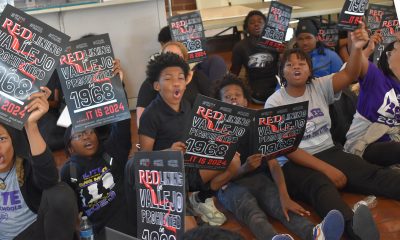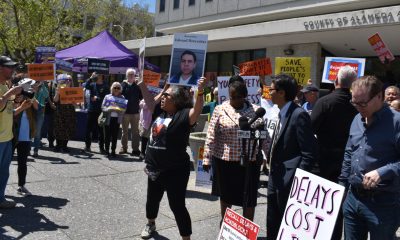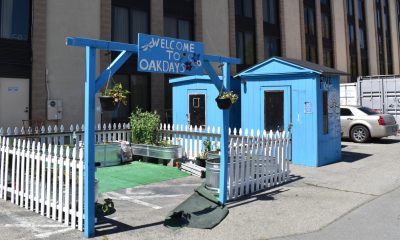Bay Area
12 Groups Fighting Youth Homelessness Win Grants Totaling $38 Million
“This funding represents an important lifeline in protecting some of the most vulnerable members of our communities,” said California Governor’s Office of Emergency Services (CalOES) Director Mark Ghilarducci. “Through the partnership with these community-based organizations we are able to provide meaningful support and change lives.”
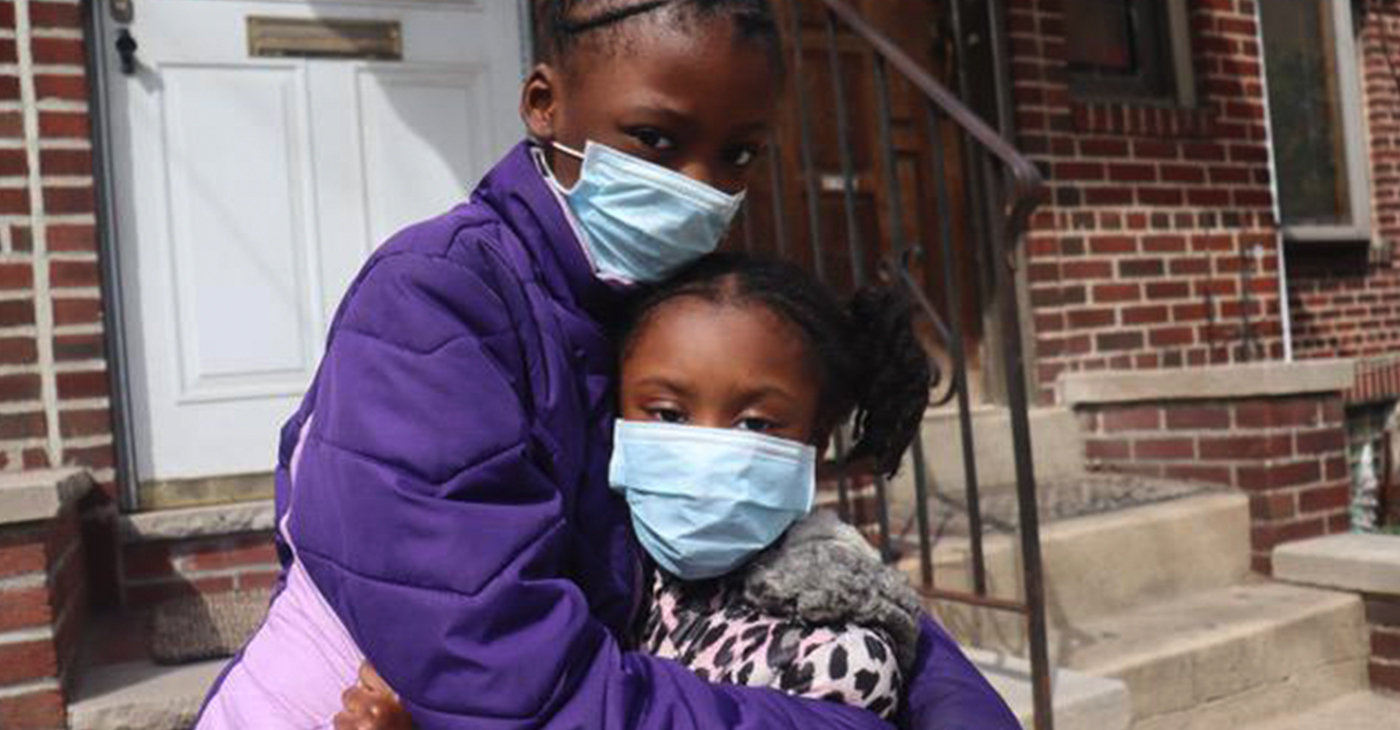
By Aldon Thomas Stiles, California Black Media
Last month, Gov. Gavin Newsom announced that California awarded $38 million in grants to 12 community-based organizations working to combat homelessness among youths and young adults in the state. The governor’s office says the grants are part of a $14 billion ongoing commitment to end homelessness in the state.
The funds, distributed through the Homeless Youth Emergency Services and Housing Program, will be used to assist young people who are facing housing insecurity or are currently unhoused in 12 different counties.
“These grants will provide relief and emergency support to young people across California experiencing homelessness, who are too often left in dire situations to fend for themselves,” said Newsom.
“We’re providing immediate aid for those living on our streets — bringing resources and services directly to young people in need and helping them onto a path towards a stable future,” the governor continued.
The funds will also go toward providing “mental health support with crisis intervention and stabilization services,” according to Newsom’s office.
About a quarter of California’s Homeless population suffers from severe mental illness, according to the California Department of Public Health.
Newsom is also proposing special courts to adjudicate cases involving mental health involving unhoused people across the state.
“There’s no compassion stepping over people in the streets and sidewalks,” Newsom said at a press briefing earlier this month. “We could hold hands, have a candlelight vigil, talk about the way the world should be, or we could take some responsibility to implement our ideas. That’s what we’re doing differently here.”
“This funding represents an important lifeline in protecting some of the most vulnerable members of our communities,” said California Governor’s Office of Emergency Services (CalOES) Director Mark Ghilarducci. “Through the partnership with these community-based organizations we are able to provide meaningful support and change lives.”
According to the California Homeless Youth Project, 200,000 Californians under the age of 18 are homeless for one or more days during the year.
“Addressing youth homelessness takes a village,” said Lourdes Castro Ramírez, secretary of the Business, Consumer Services and Housing Agency. “This is why this investment in community-based organizations that make up the village and provide bridges of support to young people is an important part of our efforts to prevent and end homelessness.”
Advocates for homeless youth say there are many factors that can lead to youth homelessness, including addiction and hostile reactions from community members about a young person’s social identity.
“Youth overwhelmingly cite family conflict and breakdown — commonly abuse or neglect, alcohol or drug addiction of a family member, pregnancy, and rejection over sexual orientation — as the major reasons for their homelessness or episodes of running away,” reads the California Coalition for Youth website.
The organizations receiving the funds are: Bill Wilson Center (Santa Clara County); Center for Human Services ( Stanislaus County); Community Human Services (Monterey County); Interface Children and Family Services (Ventura County); Larkin Street Youth Services (San Francisco County); Orangewood Foundation (Orange County); Redwood Community Action Agency (Humboldt County); Ruby’s Place (Alameda County); San Diego Youth Services (San Diego County); Volunteers of America Los Angeles (Los Angeles County); Waking the Village (Sacramento County) and Women’s Center – Youth & Family Services (San Joaquin County).
Newsom also announced his administration is allocating more than $116 million in funding to seven different “Homekey” projects as a part of the governor’s effort to provide housing for homeless people.
Newsom’s pandemic-oriented homelessness program, called Project Roomkey, will continue to receive support from the federal government as well. The state-run initiative converts hotels and other facilities into temporary housing for homeless people.
A companion program, Project Homekey, provides funding to create permanent housing for formerly unhoused people to counties, cities, local councils and other government authorities.
“Continued support from FEMA will allow us to extend Project Roomkey to get more people off the streets and into shelter,” the governor said. “Since the start of the pandemic, California has moved with unprecedented speed, helping more than 50,000 homeless individuals.”
Last month, California’s junior U.S. Sen. Alex Padilla introduced a bill proposing a nearly $532 billion federal investment over 10 years for tackling California’s and the nation’s twin homelessness and housing affordability crises.
Speaking at a Project Homekey site in Sacramento called La Mancha Way Apartments, Padilla, a Democrat, said, the legislation titled “The Housing Act for All” would provide funding for both existing programs and experimental initiatives.
“Every person has a right to the dignity and security of housing,” said Padilla. “It’s going to take all levels of government working together to rebuild a more inclusive and equitable society for all. The legislation is an opportunity to invest and align resources in expanding affordable housing and strengthening proven solutions.”
Activism
S.F. Black Leaders Rally to Protest, Discuss ‘Epidemic’ of Racial Slurs Against Black Students in SF Public School System
Parents at the meeting spoke of their children as no longer feeling safe in school because of bullying and discrimination. Parents also said that reported incidents such as racial slurs and intimidation are not dealt with to their satisfaction and feel ignored.

By Carla Thomas
San Francisco’s Third Baptist Church hosted a rally and meeting Sunday to discuss hatred toward African American students of the San Francisco Unified School District (SFUSD).
Rev. Amos C. Brown, president of the San Francisco NAACP and pastor of Third Baptist Church, along with leadership from local civil rights groups, the city’s faith-based community and Black community leadership convened at the church.
“There has been an epidemic of racial slurs and mistreatment of Black children in our public schools in the city,” said Brown. “This will not be tolerated.”
According to civil rights advocate Mattie Scott, students from elementary to high school have reported an extraordinary amount of racial slurs directed at them.
“There is a surge of overt racism in the schools, and our children should not be subjected to this,” said Scott. “Students are in school to learn, develop, and grow, not be hated on,” said Scott. “The parents of the children feel they have not received the support necessary to protect their children.”
Attendees were briefed last Friday in a meeting with SFUSD Superintendent Dr. Matt Wayne.
SFUSD states that their policies protect children and they are not at liberty to publicly discuss the issues to protect the children’s privacy.
Parents at the meeting spoke of their children as no longer feeling safe in school because of bullying and discrimination. Parents also said that reported incidents such as racial slurs and intimidation are not dealt with to their satisfaction and feel ignored.
Some parents said they have removed their students from school while other parents and community leaders called on the removal of the SFUSD superintendent, the firing of certain school principals and the need for more supportive school board members.
Community advocates discussed boycotting the schools and creating Freedom Schools led by Black leaders and educators, reassuring parents that their child’s wellbeing and education are the highest priority and youth are not to be disrupted by racism or policies that don’t support them.
Virginia Marshall, chair of the San Francisco NAACP’s education committee, offered encouragement to the parents and students in attendance while also announcing an upcoming May 14 school board meeting to demand accountability over their mistreatment.
“I’m urging anyone that cares about our students to pack the May 14 school board meeting,” said Marshall.
This resource was supported in whole or in part by funding provided by the State of California, administered by the California State Library via California Black Media as part of the Stop the Hate Program. The program is supported by partnership with California Department of Social Services and the California Commission on Asian and Pacific Islander American Affairs as part of the Stop the Hate program. To report a hate incident or hate crime and get support, go to CA vs Hate.
Bay Area
Mayor London Breed: State Awards San Francisco Over $37M for Affordable Housing
On April 30, Mayor London N. Breed announced San Francisco has been awarded more than $37.9 million in funding from the California Department of Housing and Community Development (HCD) as part of the State’s Multifamily Housing Program (MHP). The HCD loan will provide the final funding necessary for development of Casa Adelante – 1515 South Van Ness, a 168-unit affordable housing project located in San Francisco’s Mission District.

By Oakland Post Staff
On April 30, Mayor London N. Breed announced San Francisco has been awarded more than $37.9 million in funding from the California Department of Housing and Community Development (HCD) as part of the State’s Multifamily Housing Program (MHP).
The HCD loan will provide the final funding necessary for development of Casa Adelante – 1515 South Van Ness, a 168-unit affordable housing project located in San Francisco’s Mission District.
The new development at 1515 South Van Ness Ave. will provide 168 affordable homes to low-income families, formerly homeless families, and persons living with HIV earning between 25-80% of the San Francisco Area Median Income (AMI).
In addition, the project is anticipated to provide family-friendly amenities and ground floor community-serving commercial spaces that preserve the prevailing neighborhood character of the Calle 24 Latino Cultural District.
“This funding unlocks our ability to move on building affordable housing units for families in San Francisco at a crucial time. We understand the level of need for more housing that is accessible, and like the state, the city continues to face a challenging budget cycle,” said Breed. “1515 South Van Ness is a good example of what can be achieved in San Francisco when you have strong community partnerships and an unwavering commitment to deliver on critical needs for our residents.”
“From the beginning of my term as Supervisor, I have fought to bring affordable housing to 1515 South Van Ness” said Supervisor Hillary Ronen. “In the interim, the site has been utilized for homeless services and shelter, and I am thrilled that HCD has recognized the value of this development, and we are finally ready to break ground and bring 168 affordable homes to low income and formerly homeless families in the Mission.”
Owned and occupied by McMillan Electric Company until 2015, the City and County of San Francisco purchased 1515 South Van Ness Avenue in June 2019 with the intent of developing new affordable housing.
In November 2020, the San Francisco Mayor’s Office of Housing and Community Development (MOHCD) released a Multi-site Request for Qualifications (RFQ) seeking qualified developers to build affordable housing on the site, and subsequently selected Chinatown Community Development Corporation (CCDC) and Mission Economic Development Agency (MEDA) in May 2021 to develop the site.
The project is expected to begin construction in winter 2025.
“A strong, long-term push by Mission advocates to make this site 100% affordable is now paying off, with 168 family units that include services and childcare. People of color communities know what they need, and we are excited to be in partnership with a team, consisting of MEDA, CCDC, and MOHCD, that listens,” said Malcolm Yeung, Executive Director at CCDC.
“We are excited to be in partnership with CCDC, yet again, and for the opportunity to develop intergenerational affordable housing in the City’s Mission District,” said Luis Granados, executive director at MEDA.
Increasing housing affordable to lower-income and vulnerable residents is a key priority in the City’s Housing Element which calls for additional funding for affordable housing production and preservation, as well as Mayor Breed’s Housing for All Executive Directive that sets out the steps the City will take to meet the bold goal of allowing for 82,000 new homes to be built over the next eight years.
Tuesday’s funding announcement emphasizes the importance of regional and state collaboration in order to reach our housing and climate goals.
“We are thrilled—not just to bring a project of this size to a community with great need — but to do so with community-based developers and their partners who understand the neighborhood and sensitivities around cultural preservation,” said HCD Director Gustavo Velasquez.
Bay Area
East Bay Regional Park District Issues Rattlesnake Advisory
The East Bay Regional Park District released an advisory today on rattlesnakes, which emerge from winter hibernation in early spring and become more active. Warm weather can bring more potential for rattlesnake encounters with humans and dogs, particularly along trails and roads.
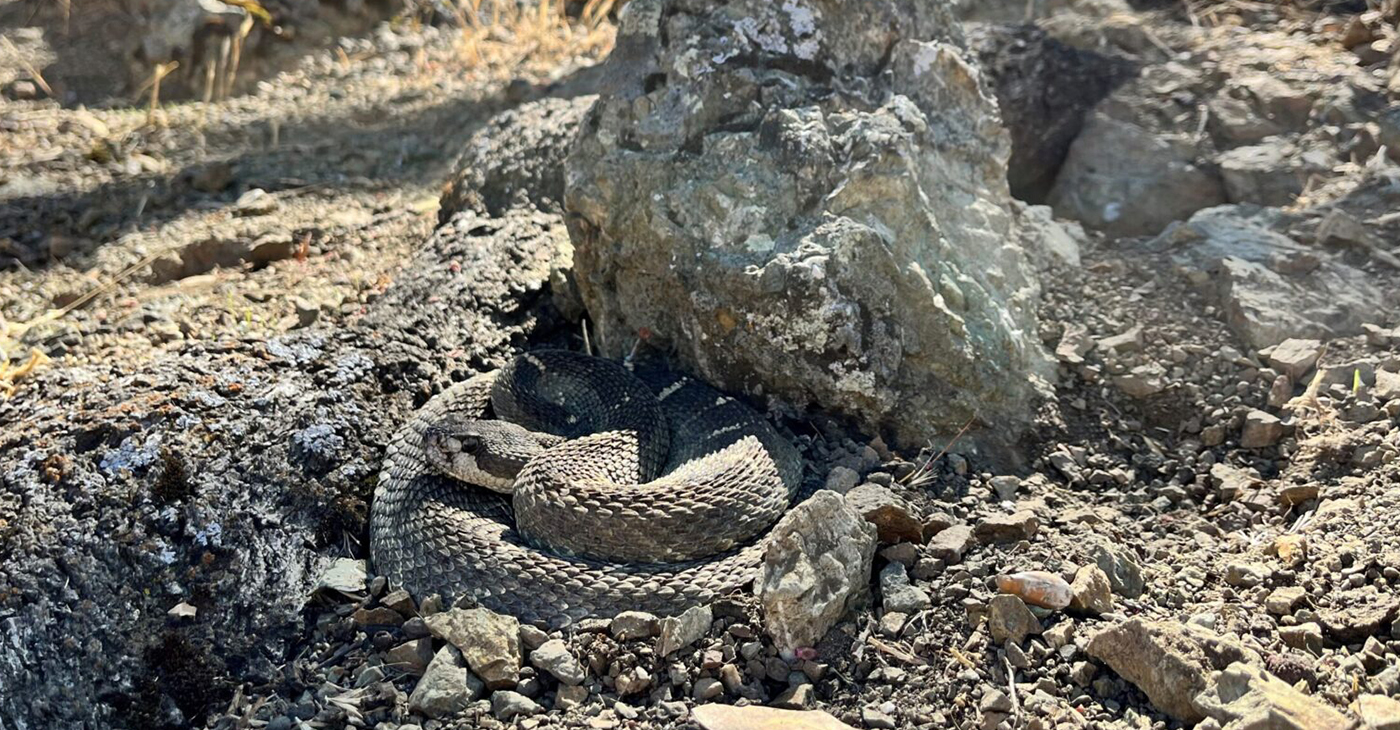
The Richmond Standard
The East Bay Regional Park District released an advisory today on rattlesnakes, which emerge from winter hibernation in early spring and become more active.
Warm weather can bring more potential for rattlesnake encounters with humans and dogs, particularly along trails and roads.
Visitors are encouraged to avoid hiking alone in case of an emergency, to scan the ground ahead as they walk, jog or ride, stay on trails avoiding tall grass, and to look carefully around and under logs and rocks before sitting down. Keep your dog on your leash to be extra safe, park officials said.
If you encounter a rattlesnake, leave it alone – it is unlawful to capture or harm one. Move carefully and slowly away or around it and give it plenty of space, park officials said.
Those who are bitten by a rattlesnake are instructed to stay calm by lying down with the affected limb lower than the heart, then having someone call 911.
Getting medical attention is critical.
Those bitten should not use tourniquets, “sucking,” or snake bite kits. If you are by yourself, walk calmly to the nearest source of help to dial 911, do not run.
If bitten by any other type of snake, wash the wound with soap and water or an antiseptic and seek medical attention.
Not sure what bit you? Check the bite for two puncture marks (in rare cases one) associated with intense, burning pain, which is typical of a rattlesnake bite. Other snakebites can leave marks without associated burning pain.
The Northern Pacific rattlesnake is the species found in East Bay Regional Parks. Snakes are important to the natural environment, helping to control rodents and other reptile populations. But enjoy them from afar.
For more information, download the Park District’s Common Snakes brochure or watch our Gopher Snake or Rattlesnake video to learn how to tell the difference between rattlesnakes and gopher snakes. Additional information is available at ebparks.org/safety/wildlife-encounters.
-

 Community3 weeks ago
Community3 weeks agoFinancial Assistance Bill for Descendants of Enslaved Persons to Help Them Purchase, Own, or Maintain a Home
-

 City Government6 days ago
City Government6 days agoCourt Throws Out Law That Allowed Californians to Build Duplexes, Triplexes and RDUs on Their Properties
-

 Business3 weeks ago
Business3 weeks agoV.P. Kamala Harris: Americans With Criminal Records Will Soon Be Eligible for SBA Loans
-

 Activism2 weeks ago
Activism2 weeks agoOakland Post: Week of April 24 – 30, 2024
-

 Activism4 weeks ago
Activism4 weeks agoOakland Post: Week of April 10 – 16, 2024
-

 Community3 weeks ago
Community3 weeks agoAG Bonta Says Oakland School Leaders Should Comply with State Laws to Avoid ‘Disparate Harm’ When Closing or Merging Schools
-

 Community3 weeks ago
Community3 weeks agoRichmond Nonprofit Helps Ex-Felons Get Back on Their Feet
-

 Community3 weeks ago
Community3 weeks agoOakland WNBA Player to be Inducted Into Hall of Fame

